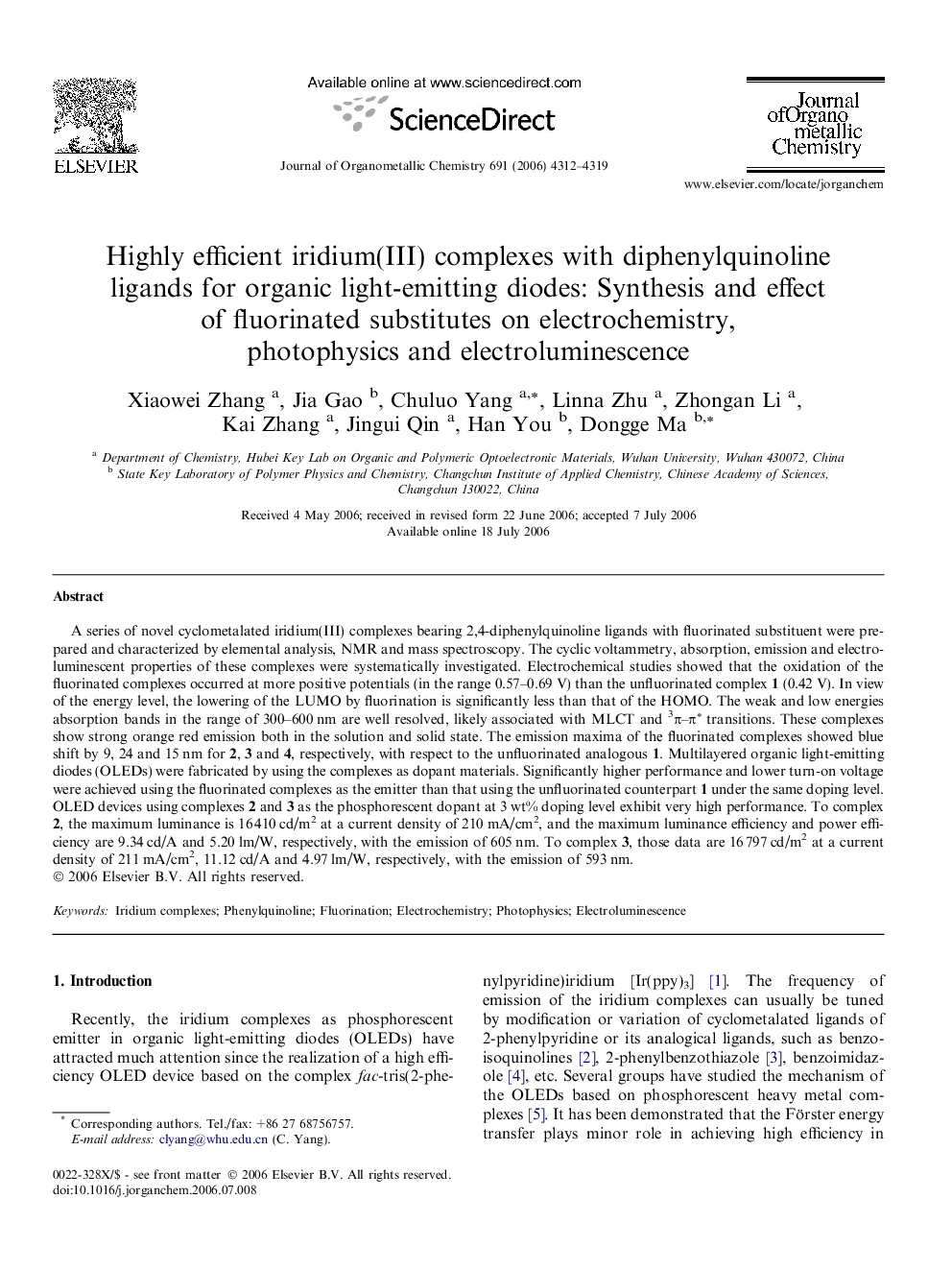| کد مقاله | کد نشریه | سال انتشار | مقاله انگلیسی | نسخه تمام متن |
|---|---|---|---|---|
| 1328491 | 977579 | 2006 | 8 صفحه PDF | دانلود رایگان |

A series of novel cyclometalated iridium(III) complexes bearing 2,4-diphenylquinoline ligands with fluorinated substituent were prepared and characterized by elemental analysis, NMR and mass spectroscopy. The cyclic voltammetry, absorption, emission and electroluminescent properties of these complexes were systematically investigated. Electrochemical studies showed that the oxidation of the fluorinated complexes occurred at more positive potentials (in the range 0.57–0.69 V) than the unfluorinated complex 1 (0.42 V). In view of the energy level, the lowering of the LUMO by fluorination is significantly less than that of the HOMO. The weak and low energies absorption bands in the range of 300–600 nm are well resolved, likely associated with MLCT and 3π–π∗ transitions. These complexes show strong orange red emission both in the solution and solid state. The emission maxima of the fluorinated complexes showed blue shift by 9, 24 and 15 nm for 2, 3 and 4, respectively, with respect to the unfluorinated analogous 1. Multilayered organic light-emitting diodes (OLEDs) were fabricated by using the complexes as dopant materials. Significantly higher performance and lower turn-on voltage were achieved using the fluorinated complexes as the emitter than that using the unfluorinated counterpart 1 under the same doping level. OLED devices using complexes 2 and 3 as the phosphorescent dopant at 3 wt% doping level exhibit very high performance. To complex 2, the maximum luminance is 16 410 cd/m2 at a current density of 210 mA/cm2, and the maximum luminance efficiency and power efficiency are 9.34 cd/A and 5.20 lm/W, respectively, with the emission of 605 nm. To complex 3, those data are 16 797 cd/m2 at a current density of 211 mA/cm2, 11.12 cd/A and 4.97 lm/W, respectively, with the emission of 593 nm.
The effect of fluorinated substituents in the diphenylquinoline ligand frame on the electrochemistry, photophysics and electroluminescent performance of iridium complexes have been studied.Figure optionsDownload as PowerPoint slide
Journal: Journal of Organometallic Chemistry - Volume 691, Issue 20, 1 October 2006, Pages 4312–4319